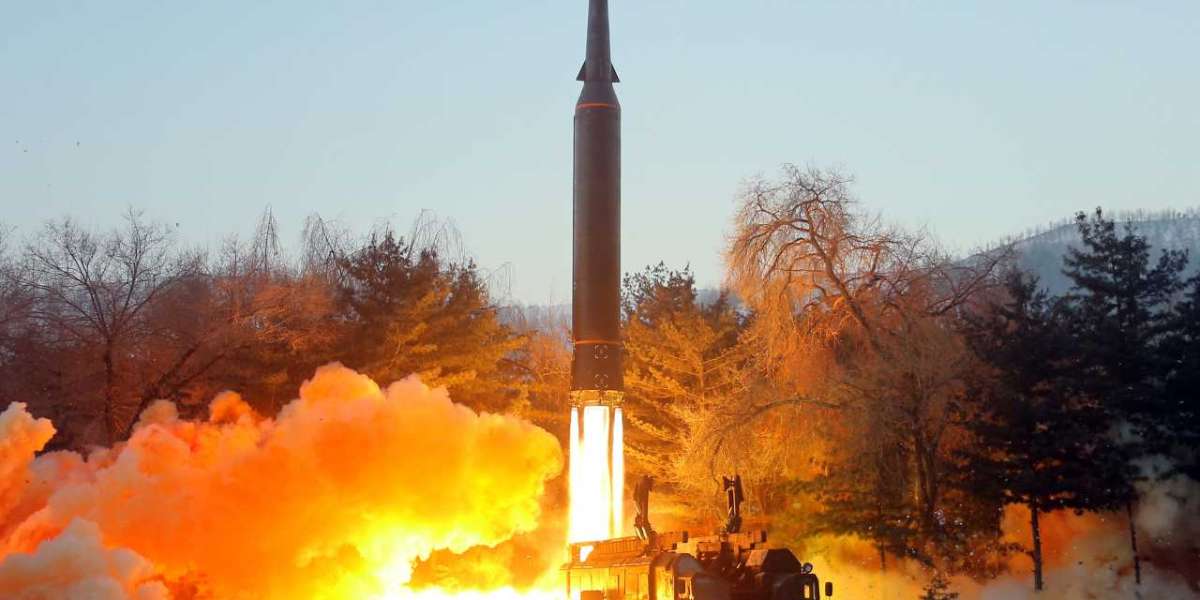According to the South Korean military on Friday, North Korea did not conduct a hypersonic missile test, and that the projectile that was launched was a Maneuverable Reentry Vehicle, also known as MaRV.
North Korea's state media claimed on Thursday that the country had conducted a test launch of a "hypersonic missile" the day before.
"The hypersonic gliding warhead made a 120-kilometer lateral movement in its flight distance from its initial launch azimuth to its target azimuth and precisely hit a predetermined target 700 kilometers away," Pyongyang claimed.
South Korea's Defense Ministry, on the other hand, said that North Korean state media appeared to have "exaggerated the performance of the missile, including its travel range, lateral movement, and maneuverability." The missile was launched on Wednesday, the ministry said.
In the initial evaluation, it was determined that the MaRV reached a top speed of approximately Mach 6 while traveling at an altitude of fewer than 50 kilometers, which explains why the maximum speed of ballistic missiles with a range greater than 500 kilometers is typically greater than Mach 5.
According to Seoul's military, the missile's travel distance did not exceed 700 kilometers, as claimed by North Korea. However, the military did not provide a precise travel distance, citing the need for further assessment.
In a statement, the Ministry of National Defense said that "our military detected North Korea's missile through various assets." It also said that South Korean and US intelligence agencies are working on rigorous analysis of missile specifications.
What's more, the Defense Ministry confirmed that North Korea did not launch a Hypersonic Glide Vehicle, also known as an HGV.
"In particular, we believe North Korea has not yet developed the technologies necessary to build a hypersonic glide vehicle," the ministry stated.
When compared to the Hwasong-8 missile, which was launched months earlier in September, the military in Seoul claims that there has been no technological progress in the latest missile.
According to the Ministry of National Defense, military assets from both South Korea and the United States are capable of detecting and intercepting the ballistic missile launched on Wednesday, in response to concerns that it could penetrate missile defenses.
Vehicle for Manoeuvrability in Reentry
Officials from the South Korean military confirmed that the projectile fired on Wednesday was a liquid-fueled ballistic missile equipped with a MaRV, which was first unveiled at a defense exhibition in October.
The officials clarified that the Hwasong-8 is analogous to the HGV, but that the most recent model is more like a MaRV in terms of appearance. There were two different locations for the testing-firings, despite the fact that both were launched from Chagang Province, located in the country's center-north.
"The shape of the warhead is not conducive to gliding," says the author "According to a military official.
"In order for hypersonic glide vehicles to fly, their lift-to-drag ratio must be greater than a certain threshold. However, the cylindrical-shaped reentry vehicle (warhead) is not suitable for gliding because of its low lift-to-drag ratio, according to a military official.
According to the official, HGVs "glide for the majority of their flight phases at speeds of Mach 5 or higher, whereas the maximum speed of North Korea's missile is only Mach 6."
"It cannot be referred to as a heavy-duty vehicle because the speed drops significantly in the terminal phase," says the driver.
Another claim made by North Korean media about lateral movement and maneuverability was also refuted by the official.
"The lateral movement is typically associated with an evasive maneuver," the official explained. North Korea did not engage in an evasive and zigzagging maneuver if reports from the North Korean media about their movement of 120 kilometers to the side are correct." Instead, the missile performed a circling maneuver due to the limited maneuverability of canards."
When questioned about the motivation behind North Korea's claim to have launched a hypersonic missile, another military official stated that the report appears to be intended for domestic audiences with a variety of objectives, including boosting confidence in the country.
As far as technological advancements go, military officials believe that Wednesday's missile launch will primarily serve to "improve the accuracy," thereby addressing some of the shortcomings of the existing missile system.
Seoul asserted that the South Korean military possesses "superior capabilities in terms of quality," which include core technologies such as powerful warheads and precise guidance, among other things.



